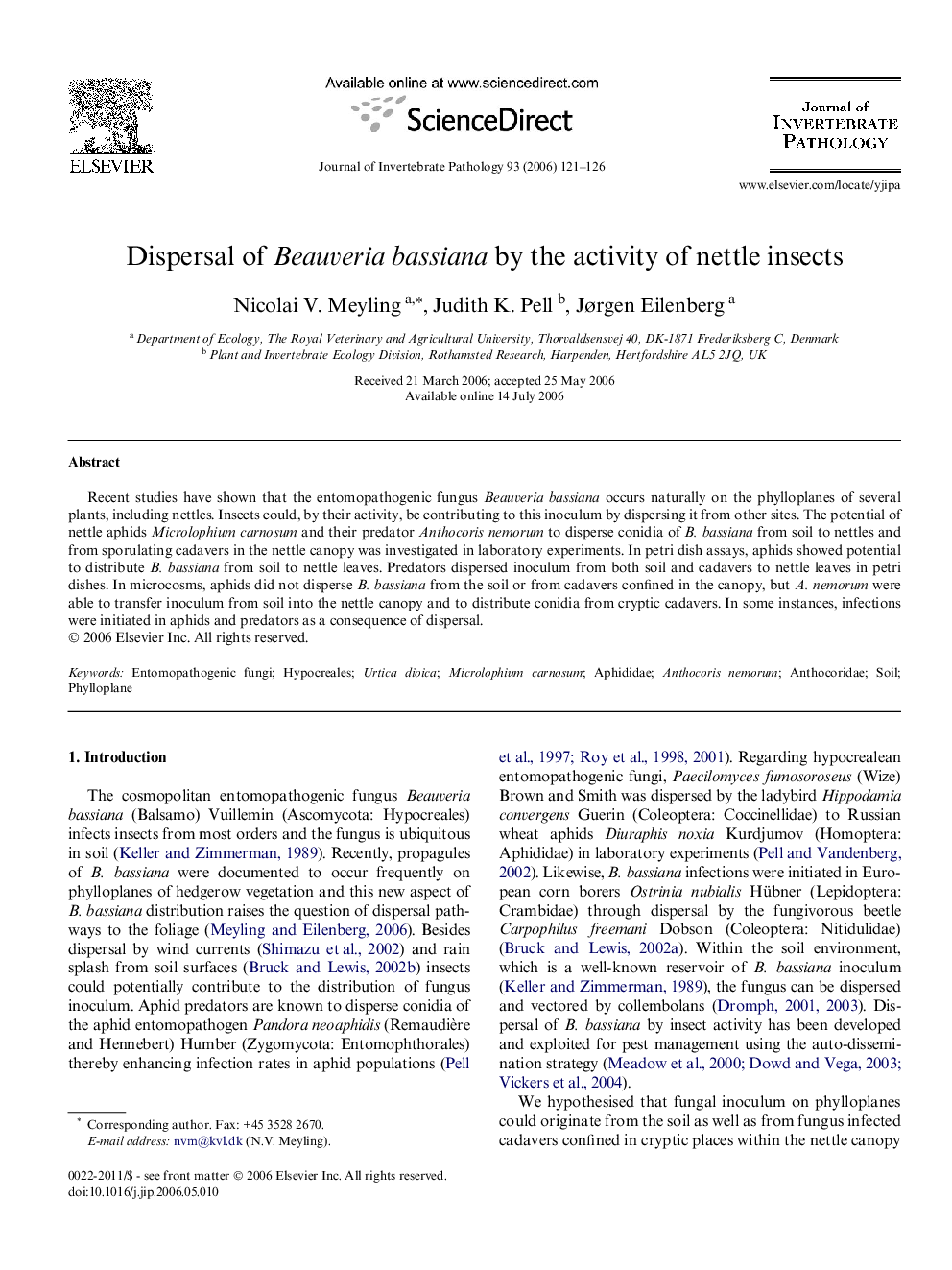| Article ID | Journal | Published Year | Pages | File Type |
|---|---|---|---|---|
| 4558780 | Journal of Invertebrate Pathology | 2006 | 6 Pages |
Recent studies have shown that the entomopathogenic fungus Beauveria bassiana occurs naturally on the phylloplanes of several plants, including nettles. Insects could, by their activity, be contributing to this inoculum by dispersing it from other sites. The potential of nettle aphids Microlophium carnosum and their predator Anthocoris nemorum to disperse conidia of B. bassiana from soil to nettles and from sporulating cadavers in the nettle canopy was investigated in laboratory experiments. In petri dish assays, aphids showed potential to distribute B. bassiana from soil to nettle leaves. Predators dispersed inoculum from both soil and cadavers to nettle leaves in petri dishes. In microcosms, aphids did not disperse B. bassiana from the soil or from cadavers confined in the canopy, but A. nemorum were able to transfer inoculum from soil into the nettle canopy and to distribute conidia from cryptic cadavers. In some instances, infections were initiated in aphids and predators as a consequence of dispersal.
